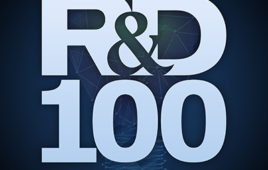Pharmaceutical companies that are first to meet healthcare’s new expectations of value could have an advantage in the competition for market share and brand differentiation, according to a report published by the Health Research Institute (HRI) at PwC US. Physicians, health insurers and patients now want to know how well a drug will work and affect total medical costs. Yet an HRI survey of health plan executives finds the information currently provided by the biopharmaceutical industry no longer suffices.
As the basis for payment shifts to improved patient outcomes, health organizations are looking for more robust evidence of clinical and economic comparative effectiveness. Drug makers that have faced challenges with formulary acceptance or reimbursement levels should speed their efforts to create and reliably demonstrate better outcomes for patients, says PwC.
The report entitled Unleashing value: The changing payment landscape for the US pharmaceutical industry looks at how health insurers view evidence of drug effectiveness, contracting strategies and relationships with pharmaceutical companies. A nationwide survey of 100 U.S. health insurers and pharmaceutical benefits managers, conducted by HRI, found:
• To be considered for drug formulary placement, 82% of health plans said a drug manufacturer must demonstrate a clear clinical benefit compared with current branded and generic treatments, and 78% demand clear proof of cost savings.
• Only 5% of health insurers are very confident – and 44% aren’t at all confident – in the economic data provided by the drug industry when making coverage and formulary decisions. Only seven% are very confident in the information to evaluate a drug’s comparative effectiveness.
• Obtaining more useful information through collaborative data sharing has been hampered by a history of distrust and misalignment between insurers and drug companies. By three to one, insurers characterize their relationship with pharmaceutical companies as “transactional” versus “collaborative.” Nearly 60% of insurers expect no change in their relationship with pharma.
• Consequently, more than half (52%) of insurers rely on independent data to evaluate drug effectiveness. The three most influential factors health plans use when making formulary decisions are: the availability of a generic equivalent, physicians’ opinions and regulatory guidance.
• 16% of health insurers have adopted new payment and contracting arrangements such as outcomes-based payments, risk-sharing agreements and bundled payments with pharmaceutical companies. Of those that haven’t, 37% expect to adopt them within the next three years.
“Pharmaceutical and life sciences companies are now collaborating with payers and providers to achieve better patient outcomes and bend the healthcare cost curve. Those that can effectively demonstrate value in non-traditional ways have an opportunity to gain market share in a very competitive market for prescription drugs,” said Douglas Strang, PwC US pharmaceutical and life sciences advisory co-leader. “Meeting new expectations of value in healthcare affects how drugs will be researched, marketed, manufactured and priced in the future, and first movers will have an advantage.”
According to the report, brand-name drug makers are fighting for a shrinking share of premium real estate on prescription drug formularies as generic drug competition and medical costs continue to rise. A shift in consumer and prescriber drug preferences could hurt revenues for pharmaceutical and life sciences companies in the U.S. that don’t accelerate efforts to prove value and build trust with doctors, hospitals and health plans.
HRI identifies five major forces dramatically altering pharmaceutical revenue models, and its report explores potential paths for drug manufacturers to unleash value, improve clinical and economic evidence of comparative effectiveness, and build trust with other health organizations.
• Force #1: The pharmaceutical industry has made a big bet on biologics, most of which are aimed at smaller, more targeted patient populations and are significantly more expensive than previously available drugs. Biologics are becoming a larger share of FDA-approved drugs and represent the majority of products in the drug pipeline, but the cost/benefit equation creates new dilemmas for purchasers.
• Force #2: Health plans and the federal government are moving away from unit-based payment that rewards pharmaceutical companies for volume and toward outcomes-based payment in which the value of a drug or therapy tracks much more closely with its impact on patient health.
• Force #3: Health plans, hospitals and physicians are demanding more and better data to determine “real-world” clinical and cost effectiveness beyond a product launch. They are seeking ways to incorporate insight from new, multiple data sources such as electronic medical records, mobile health, medical devices, insurance claims data and even patient-reported feedback over the life of a drug.
• Force #4: Health plans and employers realize they are losing money on patients who do not take their medications properly. Though prescription drug expenditures are only about 10% of total U.S. medical spending, the effects of drug non-adherence cost the health system hundreds of billions of dollars each year.
• Force #5: Technology and increased transparency of health information are empowering patients to be more involved in decisions about therapeutics. When patients take the helm of their health decisions, drug manufacturers’ discounts may carry less weight in formulary design. Rather quality and outcomes become the larger considerations.
“As the U.S. health system undergoes significant change regardless of legislative or legal actions, a new definition of value is emerging, one that places patients and their desired outcomes at the center of the universe,” said Karla Anderson, partner, PwC pharmaceutical and life sciences advisory services group. “Leading pharmaceutical companies are increasing their alignment with the rest of the ‘four P’s’ in healthcare — providers, payers and patients. They are creating new expectations across their organizations to re-orient their definition of value for each of these groups.”
The HRI report outlines steps that pharmaceutical and life sciences companies are taking to create new value. Some are focusing on developing the next innovative drug, independently. Some are collaborating with health plans, purchasers, medical device makers and others. Data-sharing agreements are being sought to gain access to clinical information needed to demonstrate and improve outcomes. Half of pharmaceutical executives in a recent HRI survey about clinical informatics said they expect to enter into a new strategic alliance or joint venture in the next 12 months to better gather and analyze outcomes data.
A copy of the full report, Unleashing value: The changing payment landscape for the US pharmaceutical industry, is available here.
Date: May 18, 2012
Source: PwC’s Health Industries Group




